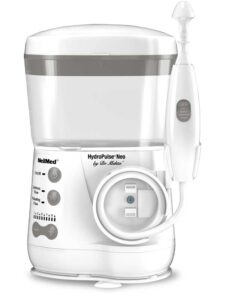How to Stay Healthy while California Forest Fires Burn. Recommendations from Hydro Med.
Whenever there is a forest fire, sinus and bronchial problems may follow. Here are recommendations to prevent these airway problems.
In Southern California individuals who are exposed to the soot and smoke of a bad fire, can take measures to prevent the sore throat, the facial pain, the plugged dry nose, and the drainage down the throat that soot and smoke may cause.
Smoke from such fires produce a mix of chemicals, one of which is sulphur dioxide. These and similar products affect the delicate linings of the nose, sinuses and chest.
Normally the nose and chest works to prevent illness:
In the nose there are millions of tiny hairs or oars called cilia. They beat in rhythm so that when bacteria or smoke particle lands in the nose, the cilia move them out of the nose. As long as the cilia are doing their job, bacteria don’t remain in place long enough to multiply.
But in excess heat, or sulphur containing smoke fumes, the nasal cilia slow down or stop. Then bacteria remain in place and multiply. Sneezing and dripping from the nose are one of the body’s attempts to remove these unwanted guests.
In the chest, a similar situation may cause bronchitis because the cilia in the bronchial passages are not moving fast enough to eject the bacteria. Coughing takes place to try to make up for the slow cilia. As a rule, when the bronchial cilia fail, then coughing defense takes place. Since coughing is the mechanism for getting rid of unwanted products, doctors recommend not to use strong cough suppressors. However, bronchitis may occur because the bacteria remain in place.
These are some suggestions from Murray Grossan, M.D.
Avoid smoke if possible.
Use a filter mask; make sure it fits properly. In an emergency, breathe through a wet towel.
Drink lots of water. This will help to dilute the smoke chemicals and speed the cilia.
Use loud humming in a low tone, like “oooommm.” This vibration helps break up thick mucus that slows cilia of the nose and chest.
For dry feeling in the nose, spray with a saline spray such as Breathe.ease Xl which is designed to aid cilia (www.grossan.com) For dry chest, inhale steam with the tongue out.
If coughing, drink warm tea, lemon, and honey. Do not use a cough suppressant; use steam with your tongue out. If coughing persists, it is better to speak to your doctor early about using a bronchial dialater such as Albuterol.
If nasal symptoms of thick nasal phlegm, nasal dryness or obstruction, dental pain, postnasal drainage and headache persists, saline irrigation which pulses at a rate synchronous to good cilia function should be used, such as the Hydro Pulse Nasal/Sinus Irrigator. When the rate of pulsation of nasal irrigation matches the pulse rate of normal cilia, they respond to the back and forth movement of the irrigation. The pulse action acts as a massage to reduce swelling and bring fresh circulation to the tissue.
At the time this is written, the “summer” fire season has begun early in California. At the same time snow is falling in other parts of the country. Strangely, the same sinus and bronchial effects that smoke can cause, also take place in the snow!
In cold, the nasal and chest cilia slow down. The student walks several blocks to school. He enters the classroom with his cilia impaired from the cold. Bacteria that are inhaled remain in place and multiply. This can be prevented; following exposure to snow and cold by warming up, for example in an empty hallway, before entering the elevator or classroom. By spending a minute warming up in the hallway, a fresh cold or sinus/bronchial infection may be avoided. Remember this the next time you shovel snow.
More details are at www.grossan.com
If you find these tips helpful, be sure to tell your friends.
Past articles include Tinnitus, Sn

